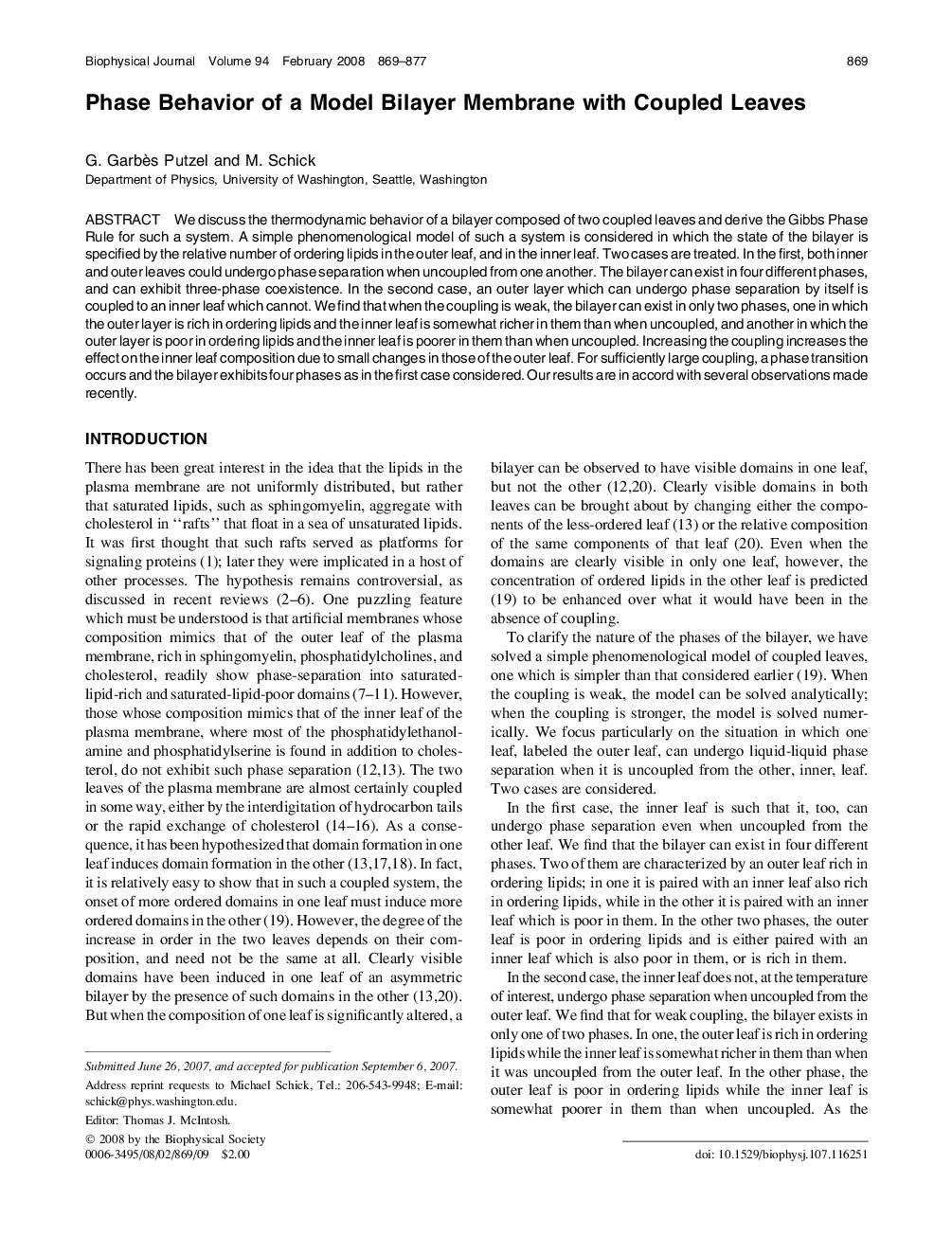| Article ID | Journal | Published Year | Pages | File Type |
|---|---|---|---|---|
| 1955244 | Biophysical Journal | 2008 | 9 Pages |
We discuss the thermodynamic behavior of a bilayer composed of two coupled leaves and derive the Gibbs Phase Rule for such a system. A simple phenomenological model of such a system is considered in which the state of the bilayer is specified by the relative number of ordering lipids in the outer leaf, and in the inner leaf. Two cases are treated. In the first, both inner and outer leaves could undergo phase separation when uncoupled from one another. The bilayer can exist in four different phases, and can exhibit three-phase coexistence. In the second case, an outer layer which can undergo phase separation by itself is coupled to an inner leaf which cannot. We find that when the coupling is weak, the bilayer can exist in only two phases, one in which the outer layer is rich in ordering lipids and the inner leaf is somewhat richer in them than when uncoupled, and another in which the outer layer is poor in ordering lipids and the inner leaf is poorer in them than when uncoupled. Increasing the coupling increases the effect on the inner leaf composition due to small changes in those of the outer leaf. For sufficiently large coupling, a phase transition occurs and the bilayer exhibits four phases as in the first case considered. Our results are in accord with several observations made recently.
